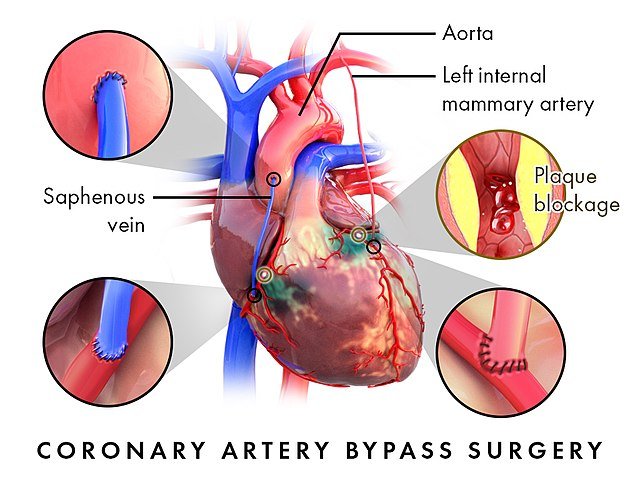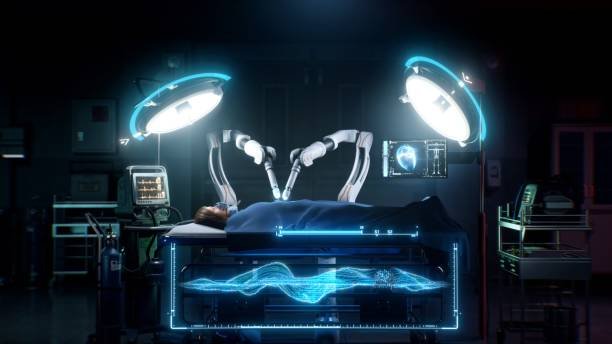
Coronary Artery Bypass Surgery. Surgical Risks, Procedures, Preoperative Preparation, Postoperative Wound Care Instructions
Basic concepts of coronary artery bypass surgery
Coronary artery bypass surgery (Coronary artery bypass surgery, also known as Bypass surgery, also known as Coronary artery bypass graft, CABG for short) is a very common surgery, mainly used to treat patients with coronary artery stenosis or obstruction.
Coronary artery bypass surgery involves cutting off blood vessels from the patient’s legs, arms, or chest and transplanting them to the side of the blocked coronary artery as a new blood transfusion channel, allowing more blood to flow to the heart and providing the heart with sufficient oxygen and nutrients.
Why is coronary artery bypass surgery necessary?
Patients who require coronary artery bypass surgery usually meet the following conditions:
- Multiple coronary arteries are blocked.
- Severe obstruction of the left main coronary artery.
- Patients with coronary artery blockage cannot be improved by balloon angioplasty.
- Balloon dilation was performed and a stent was placed, but the vessel narrowed again.
- Other treatments are less effective.

Risk factors for coronary artery bypass surgery
Generally speaking, if a patient does not suffer from other diseases at the same time (such as diabetes, kidney disease), the chance of complications related to surgery is low. The following are risks that patients may face during or after surgery:
- Bleeding
- Wound infection
- Stroke
- Myocardial infarction: caused by the sudden rupture of a blood clot after surgery.
- Memory loss or difficulty thinking (usually improves within 6 to 12 months after surgery)
- kidney problems
Preparation for coronary artery bypass surgery
Before surgery, you should pay attention to the following:
- The day before surgery, no food after 12 midnight (including water, except immediate medications)
- Be sure to understand the risks of surgery and your heart condition.
- Family members are accompanied to facilitate communication about treatment matters.
- Practice good personal hygiene to reduce the risk of infection.
- Tell your doctor about your medical history and medications you are taking.

Coronary artery bypass surgery procedure
Currently, there are three main ways to perform coronary artery bypass surgery:
Traditional surgery
That is, open heart (thoracotomy) surgery, the doctor must saw open the patient’s sternum, connect the patient’s heart to an artificial heart-lung machine (extracorporeal circulation machine), and perform the surgery while the patient’s heart has stopped.
When selecting a graft, the physician may choose from the patient’s internal thoracic artery (internal mammary artery), radial artery in the forearm, great saphenous vein in the leg, or gastroepiploic artery. Generally speaking, arterial grafts have better durability and patency when used for a long time. Doctors can cut out the required blood vessels through traditional or endoscopic methods, and then use vascular anastomosis (Vascular anastomosis) to allow the blood vessels to be fixedly joined to the blocked coronary artery to form a bypass channel.
After the doctor completes the transplantation, the doctor can sew up the wound and allow the heart to beat again. The general operation time is about 3 to 6 hours, depending on the number of blood vessels that the patient needs to transplant.
Beating heart surgery
Compared with open heart surgery, there are now some less invasive methods, such as off-pump coronary artery bypass surgery (also known as off-pump coronary artery bypass surgery), which does not require the use of With an artificial heart-lung machine, the patient’s heart can still continue to function during the operation, but it requires the use of equipment to fix the angle of the heart and keep the coronary arteries stable, and it is also more difficult to perform. It may not be suitable for situations where many blood vessels need to be transplanted. The advantage is that the patient’s potential postoperative risks can be reduced and the operation time is shorter.
Minimally invasive surgery
Minimally invasive surgery may use the Da Vinci arm (robotic arm) or image-assisted endoscopy to replace traditional surgery that requires opening a 20-centimeter-long wound on the patient’s chest and sawing open the sternum. practices.
Minimally invasive surgery can make a small wound or several small holes in the patient’s chest to perform coronary artery bypass surgery through the gap between the ribs.
Compared with traditional surgery, patients experience less pain and a shorter recovery period after surgery. From an aesthetic point of view, smaller scars also make it easier for patients to choose clothing and cover them up. Of course, this surgery is also relatively expensive and not suitable for everyone.

Wound care after coronary artery bypass surgery
After the operation, the patient will be admitted to the intensive care unit for observation. Within a few hours after surgery, the patient still needs to be intubated to assist breathing, and can be extubated once he can breathe normally.
If the patient has no other complications after the operation and is in stable physical condition, he usually only needs to stay in the intensive care unit for 3 to 5 days before being transferred to the general ward. He should be discharged after about a week of observation. The following are precautions for postoperative wound care:
- It is normal for the wound to be slightly swollen or painful within 1 week after surgery. However, if there is excessive swelling, redness, fluid leakage, bleeding, or fever, you should return to the doctor immediately for examination.
- Take a shower instead of a bath. After bathing, please wipe the wound with a sterile cotton swab to keep it dry.
- Within 3 months after surgery, avoid lifting heavy objects (more than 2 kilograms), riding bicycles, carrying children, chest expansion exercises (especially those who have undergone sternum sawing), repetitive activities of the upper limbs (such as swimming, shaking hands, mopping the floor), and sleeping. Do not sleep on your stomach. Please get out of bed by sleeping on your side. Do not pull the bed rails or support the bed with your hands to get up.
Coronary artery bypass surgery increases blood flow to the heart, and in most cases, patients will have no chest pain for 10 to 15 years. However, there is still the possibility of atherosclerosis in bypassed blood vessels, so patients still need to take medications regularly and change their lifestyle habits to reduce the chance of needing a second coronary bypass surgery. Relevant health care methods are as follows:
- If you have diabetes, monitor your blood sugar.
- Eat a healthy diet to lower cholesterol (e.g., the DESH diet).
- Control blood pressure.
- Exercise regularly.












